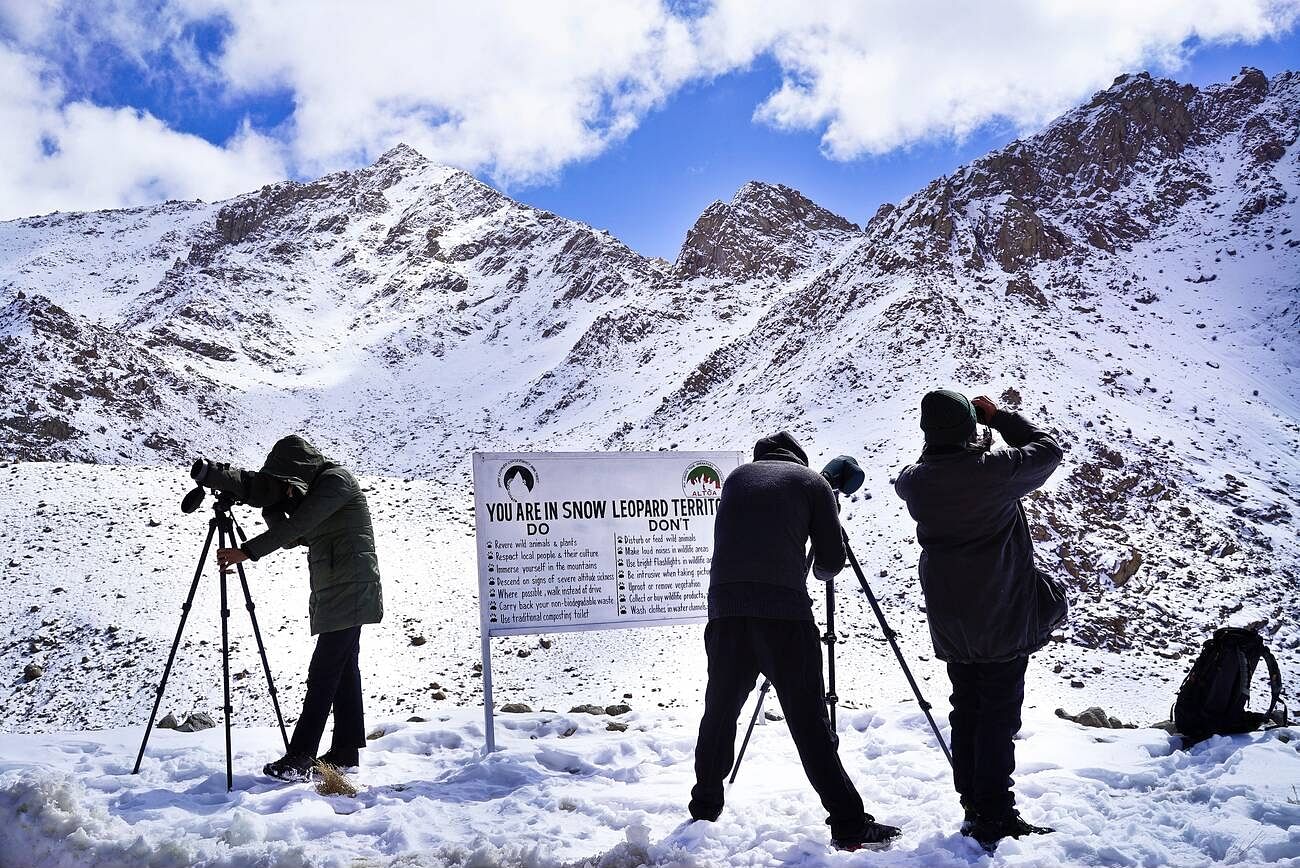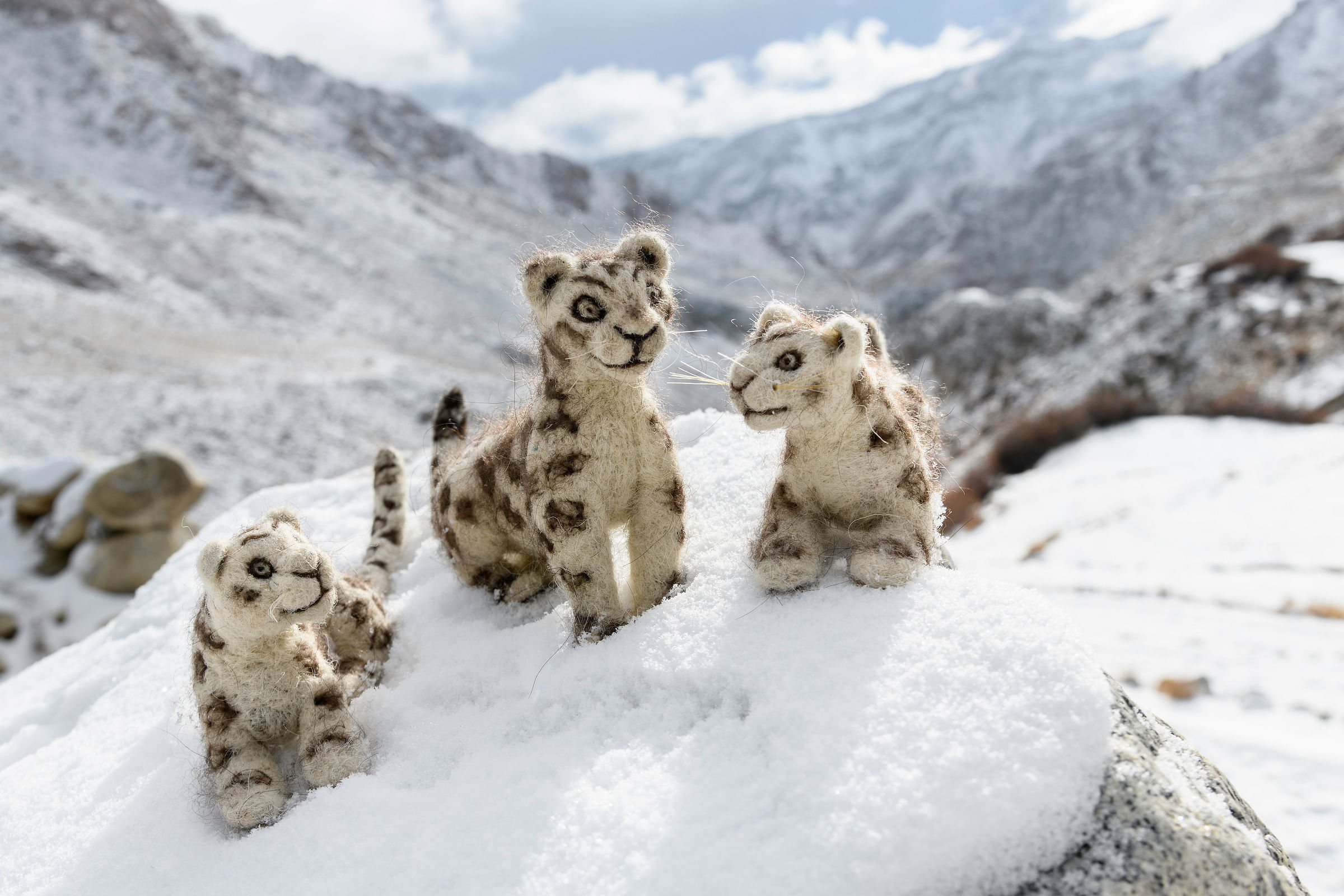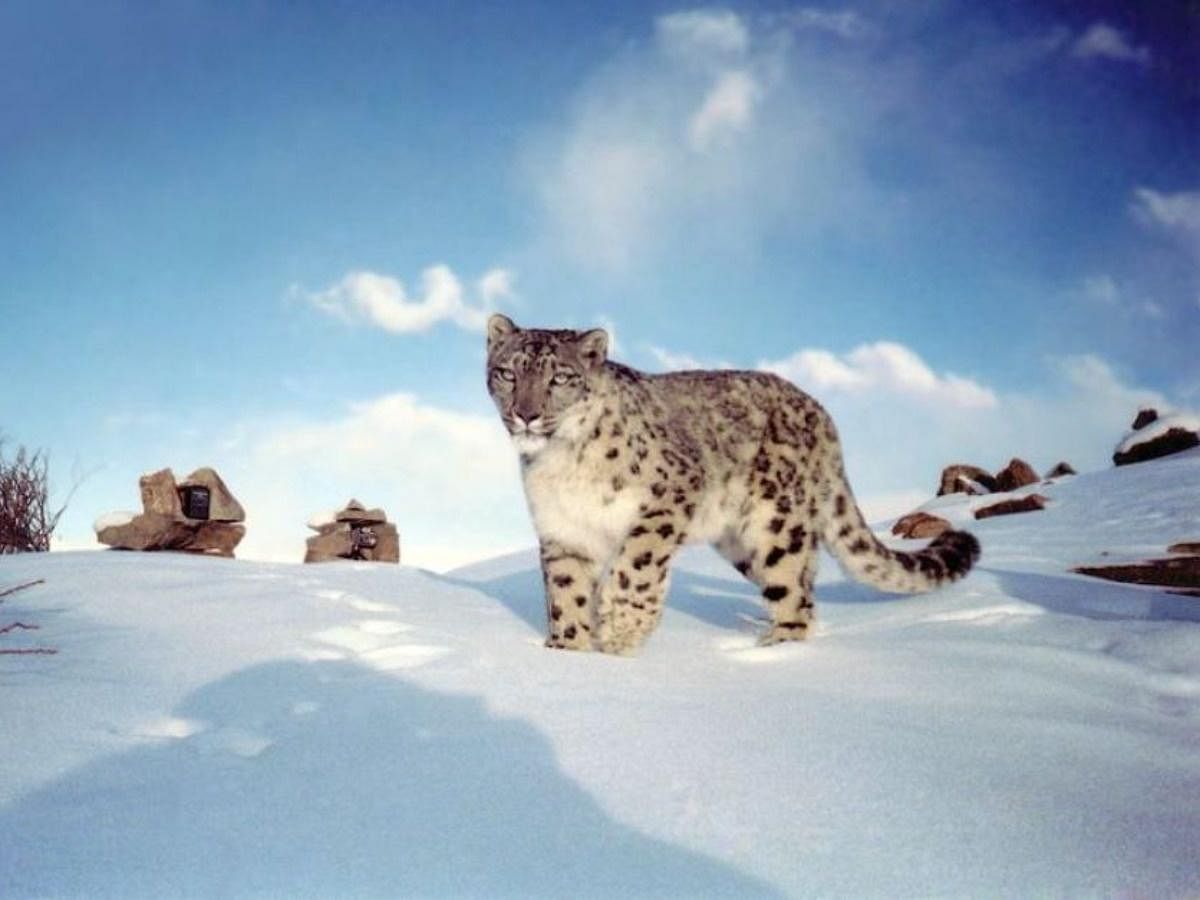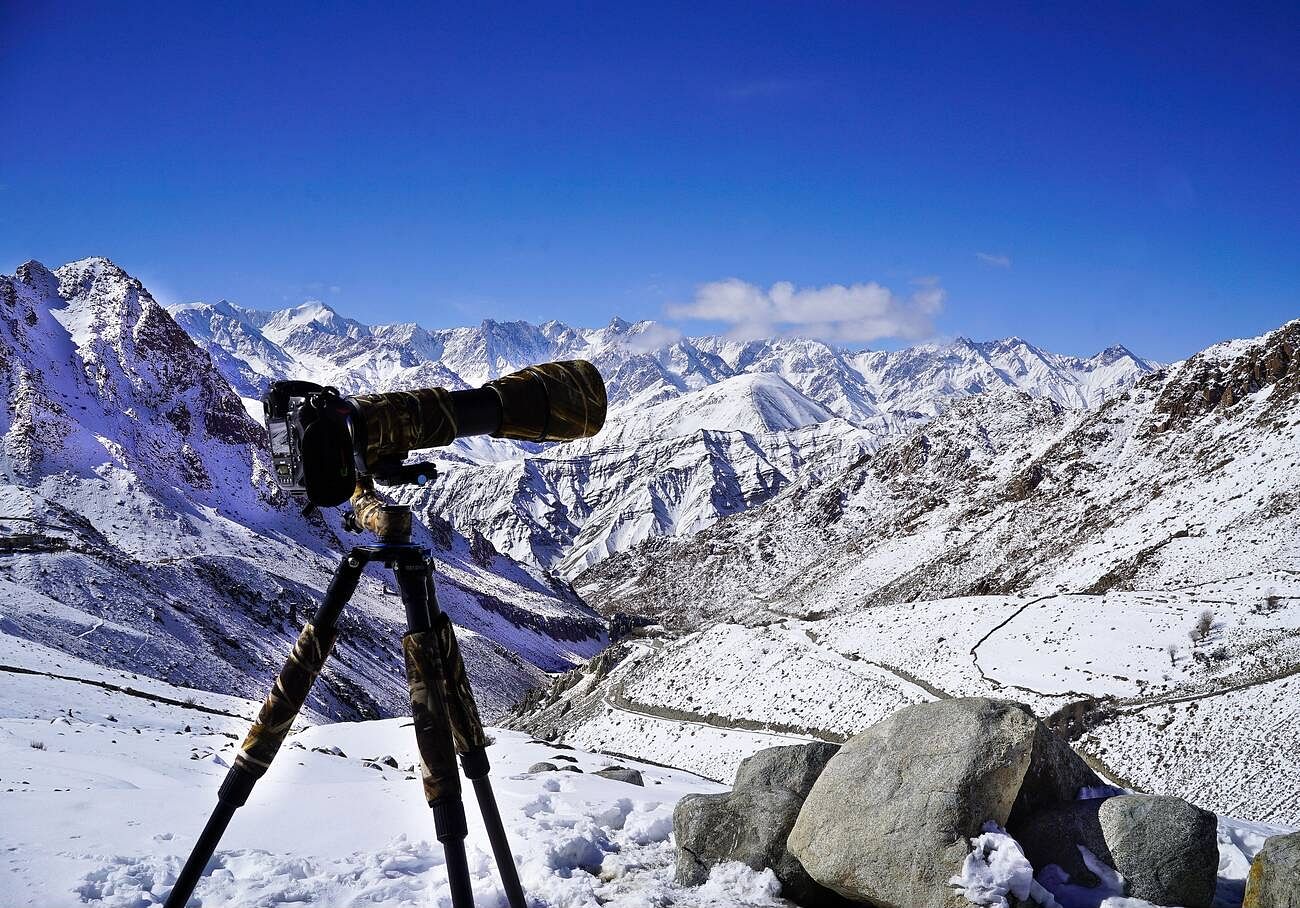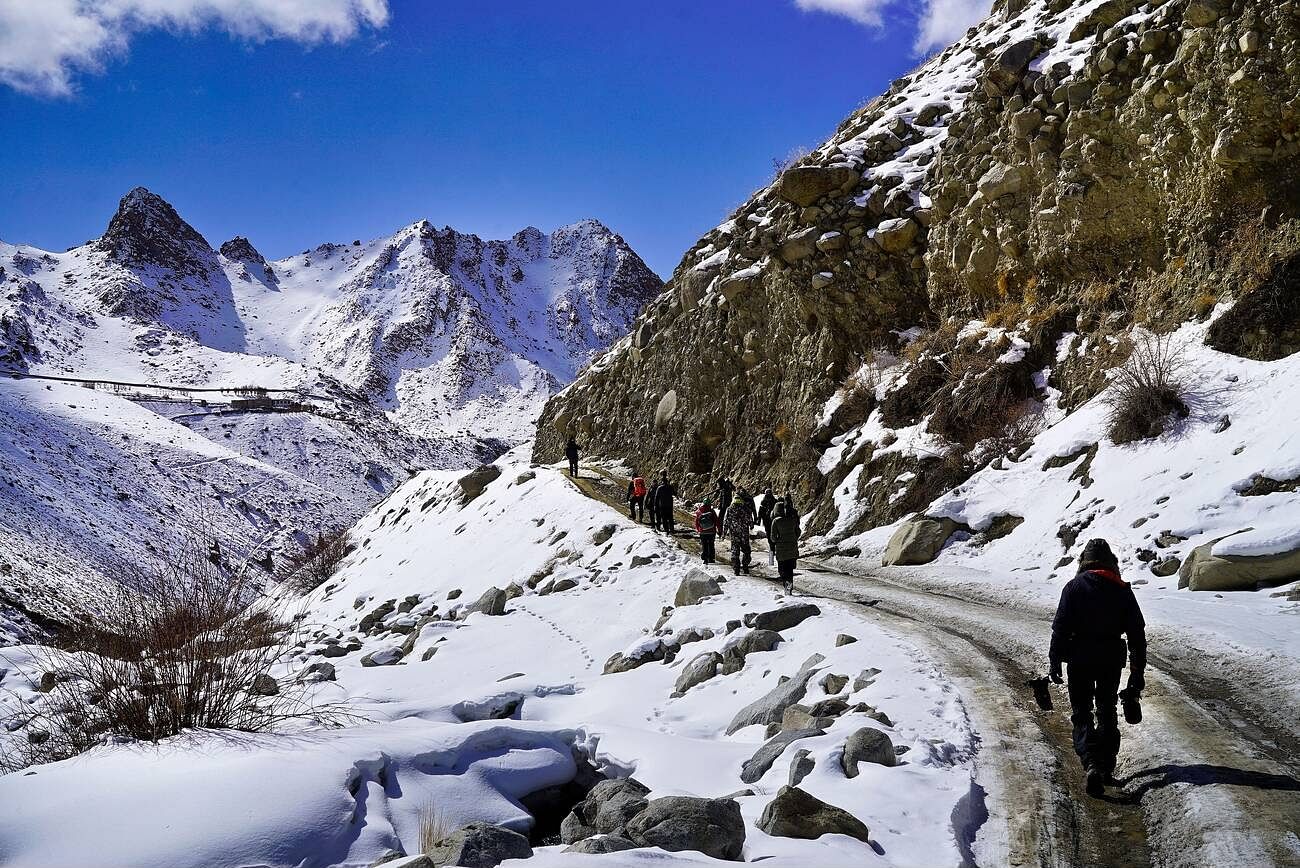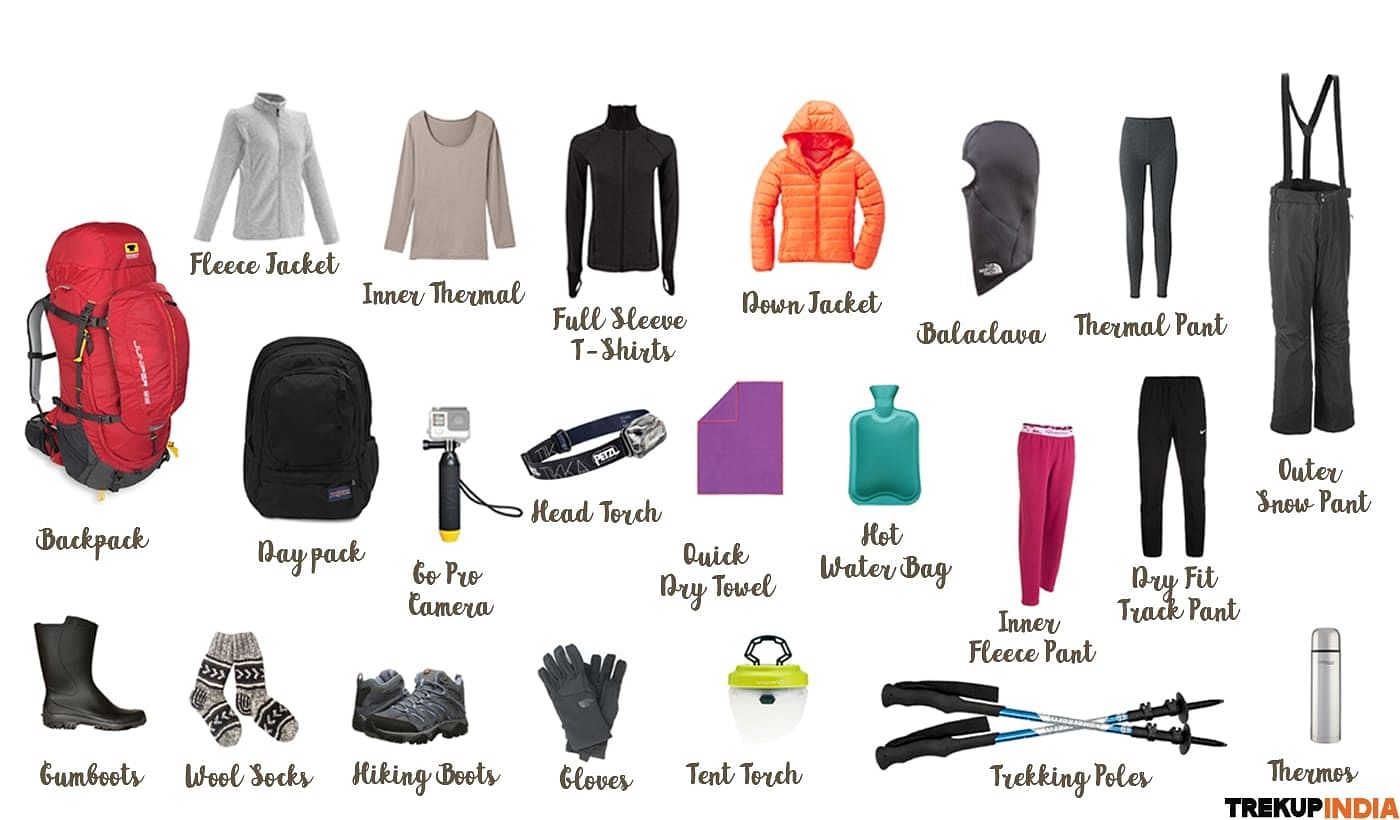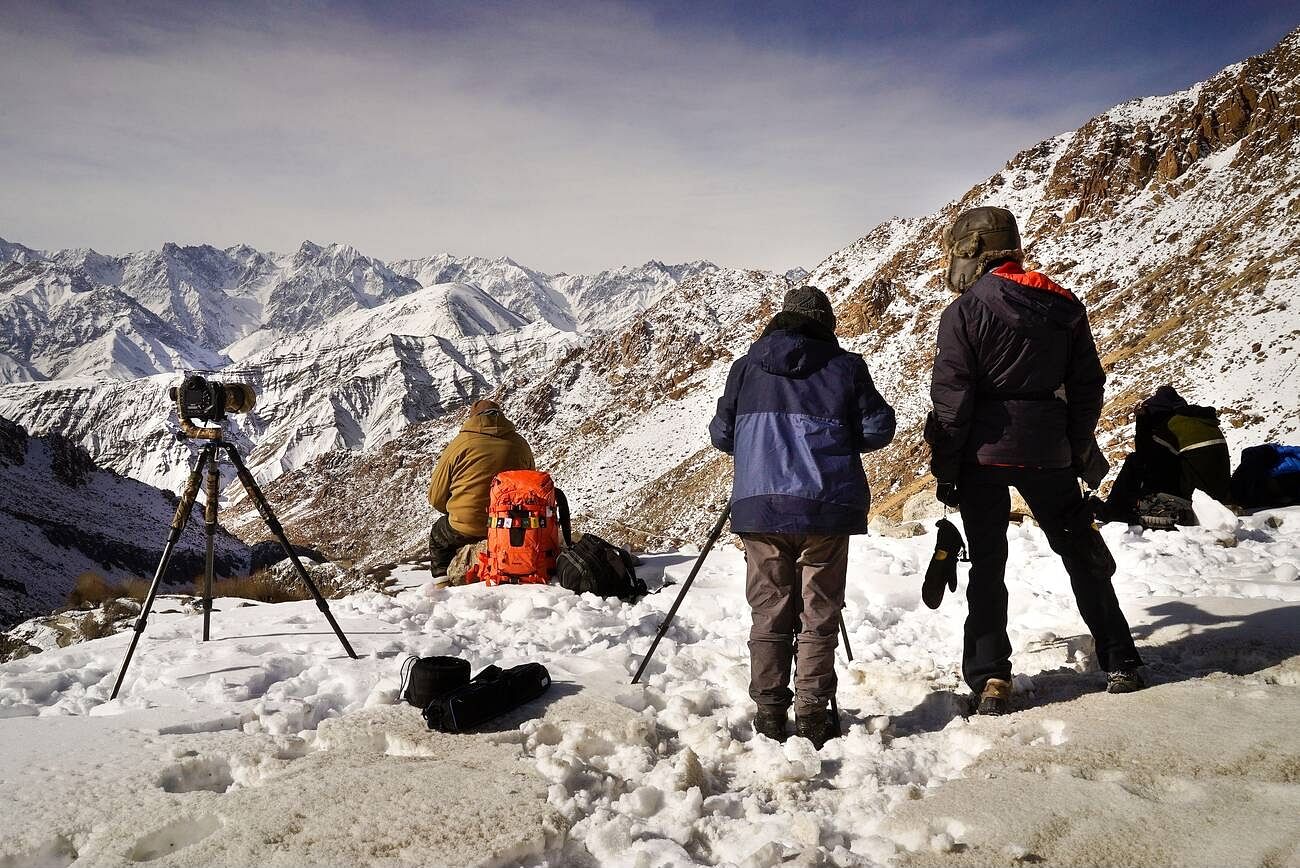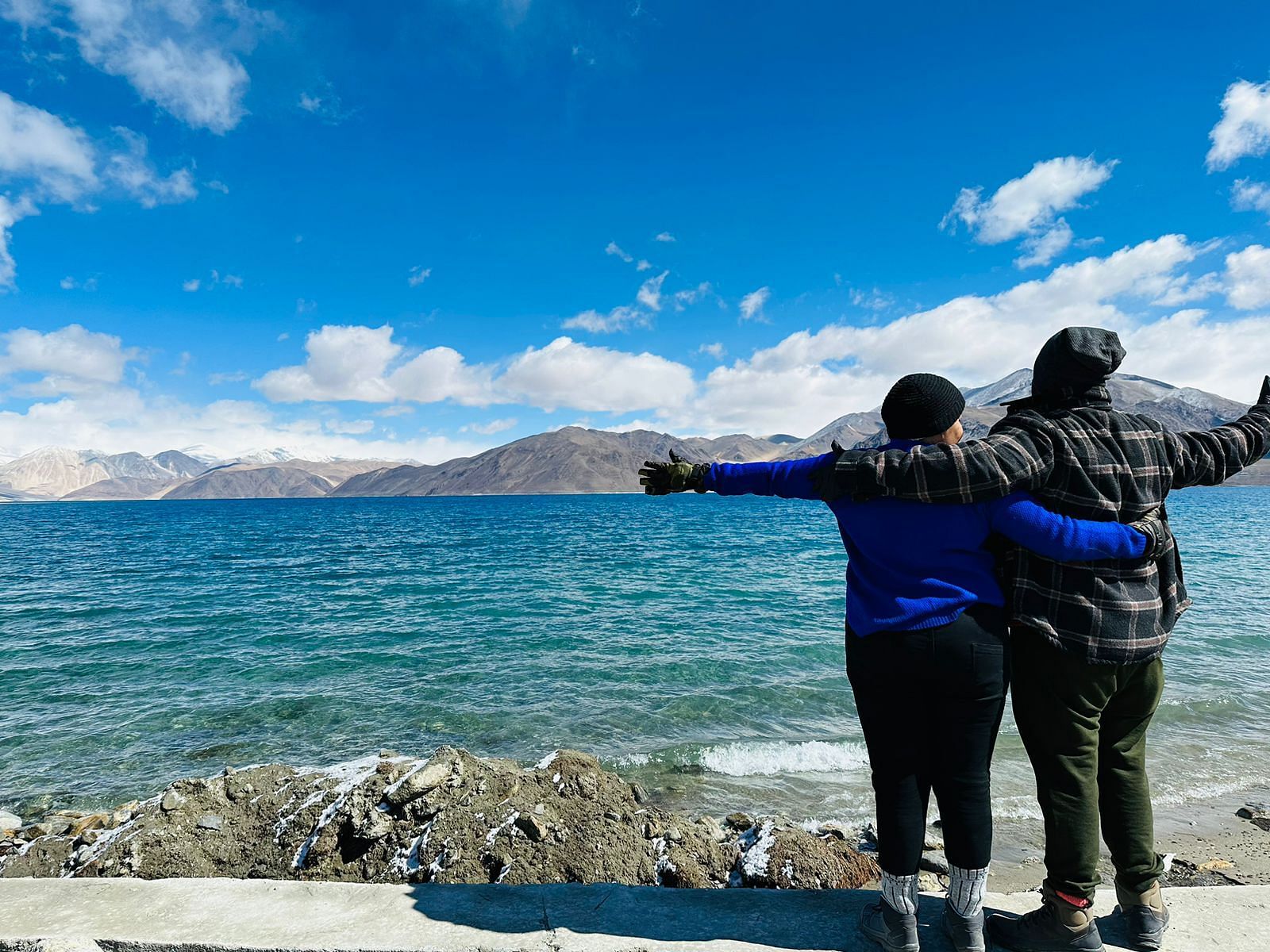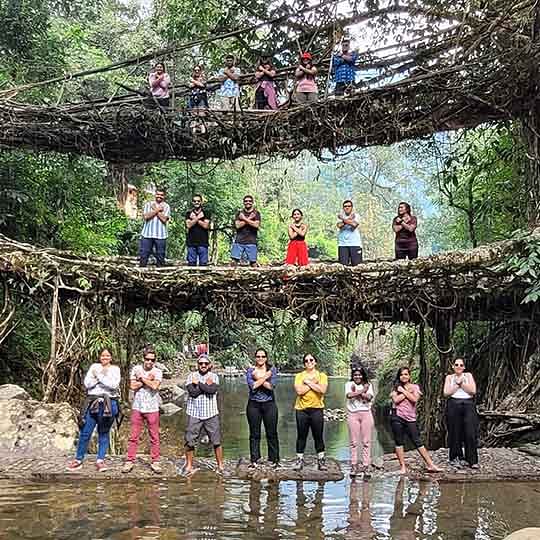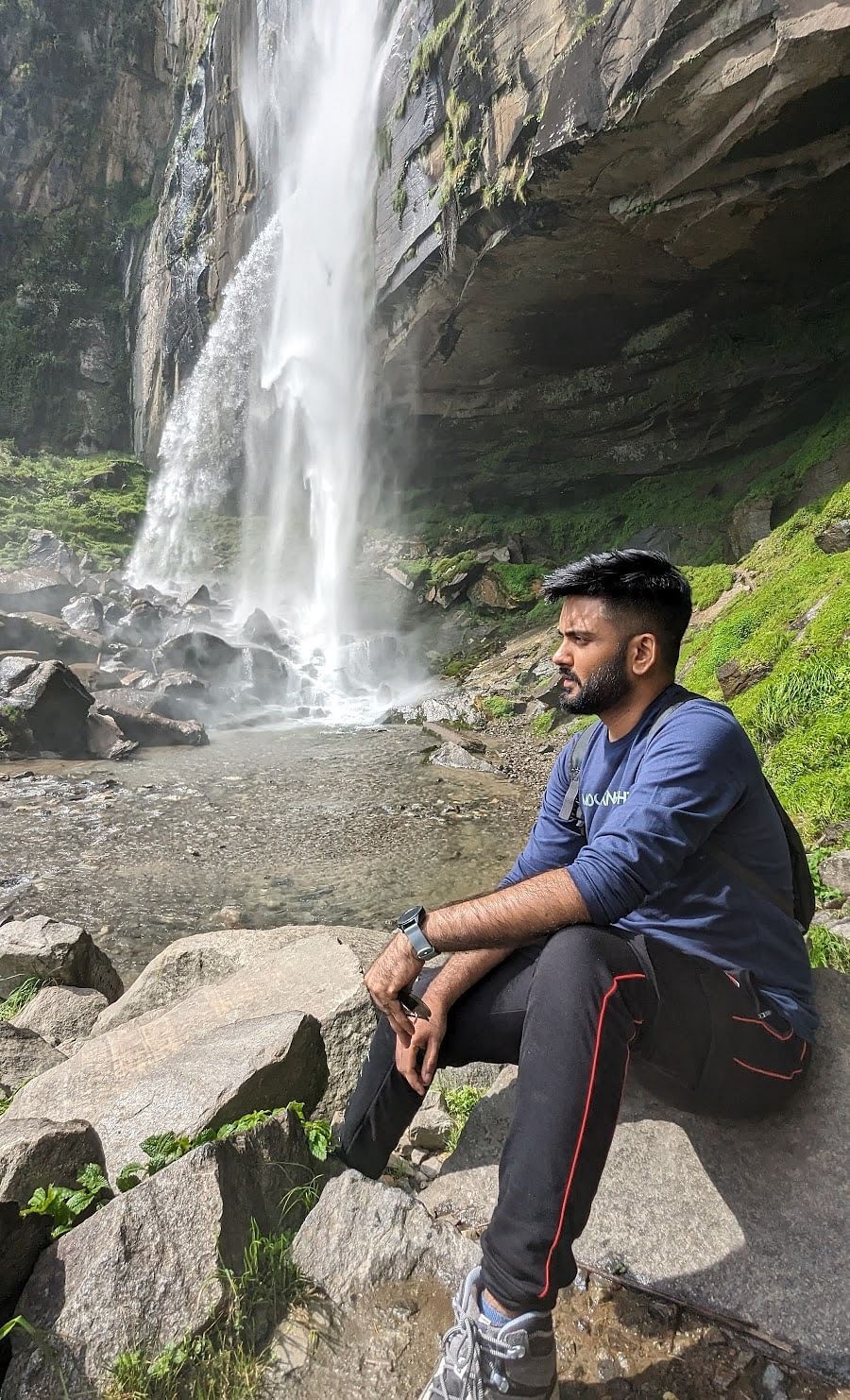While most trek for the breathtaking views, imagine encountering something even rarer—a snow leopard! On your Ladakh tour, make sure to experience the thrill of spotting the 'Ghost of the Mountains' during the Snow Leopard Trek!
Where can you spot the most snow leopards? At Hemis National Park—home to over 200 of them, the highest number in India! What makes these leopards so special? They are among the most enigmatic and awe-inspiring creatures on Earth, so well-camouflaged that even scientists find it difficult to track them. Their gray-white spotted fur blends perfectly with the rocky Himalayan terrain.
They’re waiting for you! Get ready to spot these elusive cats and tick them off your bucket list. You can also pair your trek with a Ladakh bike trip to double your adventure.
Why Ladakh for Snow Leopard Trek?
- Highest Density: Hemis NP has ~200 snow leopards (highest in India).
- Best Season: Winter (Dec–Mar) when they descend to lower valleys.
- Guaranteed Sightings: 80-90% success rate with expert trackers.
When is the Best Time for Snow Leopard Trekking in Ladakh?
The ideal time to go on a Snow Leopard Trek in Ladakh is from January to March. This is when the elusive snow leopards descend to lower altitudes in search of food, increasing your chances of spotting them in the wild. The stark winter landscape also makes it easier to track their movements against the snow-covered terrain.
Keep in mind: the temperatures can drop to –20°C, so proper winter gear and physical preparation are a must. But if you’re up for the challenge, this is one of the most thrilling wildlife experiences in the Himalayas!
How to Reach Snow Leopard Trek?
The most convenient way to reach Hemis National Park is by flying to Kushok Bakula Rimpochee Airport in Leh, which is well-connected to major cities like Delhi, Mumbai, and Srinagar. From Leh, you’ll travel by road to the trek’s starting point—usually Zingchen or Rumbak village, both within a couple of hours' drive.
While you can drive or take a bus to Leh from Manali (approx. 474 km) or Srinagar (approx. 434 km), note that these routes are only open from May to October. Since the Snow Leopard Trek takes place in winter, flying to Leh is your best and safest option.
Once in Leh, spend at least 2–3 days acclimatizing to the high altitude (over 11,000 ft). Use this time to explore local monasteries, cafés, and markets, and to prepare your body and gear for the challenging trek ahead.
Best Zones for Snow Leopard Spotting
Hemis National Park in Ladakh is the ultimate destination for spotting snow leopards in India. Within the park, several zones stand out for their high sighting rates and unique terrain:
1. Rumbak Valley
- Sighting Success Rate: 85–90%
- Highlights: Known as the prime zone with the highest leopard activity. It offers moderate-level treks and is popular among wildlife enthusiasts.
2. Zingchen Valley
- Sighting Success Rate: 75–80%
- Highlights: Easiest access from Leh, making it beginner-friendly. A great choice for first-time trekkers.
3. Ullay Valley
- Sighting Success Rate: 70–75%
- Highlights: A remote and less crowded area, ideal for those who prefer solitude and raw adventure.
4. Husing Valley
- Sighting Success Rate: 65–70%
- Highlights: Steeper terrain, perfect for serious photographers looking for dramatic snow leopard shots.
5. Shingo Valley
- Sighting Success Rate: 60–65%
- Highlights: The least explored zone—challenging but highly rewarding for patient trekkers and true wilderness lovers.
Suggested Read: Solo Trekking in Ladakh 2025: Best Routes and Must-Know Tips
Attractions at Snow Leopard Trek Ladakh
- Snow Leopard Sightings: Spot the elusive "Ghost of the Mountains" in its natural habitat.
- Snow Leopard Trek in Hemis National Park: India’s highest density of snow leopards with stunning high-altitude landscapes.
- Wildlife Encounters (Beyond the Snow Leopard): Himalayan blue sheep, ibex, red fox, Tibetan wolves, and golden eagles.
- Remote Villages: Experience Ladakhi culture and hospitality in villages like Rumbak and Ulley.
- Breathtaking Views: Snow-covered peaks, frozen rivers, and vast valleys create postcard-perfect scenery.
Snow Leopard Trek Itinerary (7-10 Days)
WanderOn can customize the Snow Leopard Trek itinerary to suit your preferences, ensuring a personalized and unforgettable adventure in Ladakh. Here's a detailed Snow Leopard Trek Itinerary (7–10 Days) that includes acclimatization, trek highlights, and practical tips to spot the Ghost of the Mountains in Ladakh:
Day 1–2: Arrive & Acclimatize in Leh (11,500 ft)
- Fly to Leh and rest to adjust to the high altitude.
- Explore nearby monasteries and markets.
Day 3: Drive to Zingchen – Trek to Rumbak Village
- 2-hour drive + 4-hour trek to Rumbak (base for snow leopard spotting).
- Stay in a homestay inside Hemis National Park.
Day 4–7: Snow Leopard Tracking
- Daily hikes (4–6 hrs) with expert trackers.
- Explore Rumbak, Husing, Yurutse & Tarbung valleys.
- Spot snow leopards, blue sheep, foxes, and more.
Day 8–9: Trek Back to Zingchen – Return to Leh
- Return trek and drive back to Leh.
- Relax, shop, and prepare for departure.
Day 10: Fly Out
- Depart from Leh with epic memories and wildlife photos.
Cost Breakdown (Per Person)
- Flights to Leh: ₹6,000 – ₹15,000 (depending on city and booking time)
- Accommodation in Leh: ₹1,000 – ₹2,500 per night (for 2-3 nights)
- Permits & Entry Fees: ₹800 – ₹1,200
- Trekking Package: ₹20,000 – ₹35,000 (includes guide, accommodation, meals)
- Porter/Mule (Optional): ₹1,000 – ₹1,500 per day
- Winter Gear Rental: ₹1,500 – ₹3,000
- Food in Leh: ₹1,000 – ₹2,000 total
Total Estimated Cost: ₹30,000 – ₹55,000 per person.
Suggested Read: Markha Valley Trek: A Stunning Tea House Trek in Ladakh
Packing List for Snow Leopard Trekking
Clothing:
- Synthetic Trek Pants (for comfort and flexibility)
- Windcheater (for wind protection)
- Warm Pants (insulated for extra warmth)
- Body Thermals (upper & lower for layering)
- Full Sleeves Collar T-Shirts (for added sun protection)
- Down Jacket (for extreme cold protection)
- Fleece Jacket (for insulation)
- Raincoat or Poncho (to stay dry during rain)
- Merino Trekking Socks (comfortable and breathable)
- Undergarments (quick-dry material recommended)
- Hat with Neck Cover (for sun and cold protection)
- Woolen Gloves and Dual Layer Synthetic Waterproof Gloves (to keep hands warm and dry)
- Woolen Cap (that covers ears for warmth)
- Woolen Socks for Sleeping (keeps your feet warm at night)
- Woolen Stole or Balaclava (to wrap around the neck for warmth)
Footwear & Gear:
- High Ankle Trekking Shoes (for support and stability)
- Rucksack (40-50L, waterproof and lightweight)
- Insulated Water Bottle or Thermos Flask (for hot drinks and hydration)
Gear:
- Trekking Poles (for balance and support on rocky terrain)
- Binoculars (10x42 for spotting wildlife)
- Headlamp (for hands-free lighting at night)
Camera Gear:
- DSLR with 300mm+ lens (smartphone zoom won’t cut it for wildlife photography)
Health Essentials:
- Diamox (for altitude sickness prevention)
- Lip Balm (to prevent chapped lips in the cold)
- Sunscreen (SPF 50+ for UV protection)
- UV Protection Sunglasses (to avoid snow blindness)
Challenges & Tips for Snow Leopard Adventures in Ladakh
1. Extreme Cold & Altitude
Challenge: Temperatures drop to -20°C to -30°C at night, and altitudes reach 4,000m+, raising risks of AMS (Acute Mountain Sickness).
Solutions:
- Acclimatize: Spend 2–3 days in Leh (3,500m) before trekking.
- Layer Up: Wear thermal base layers, down jackets, and windproof gloves.
- Hydrate: Drink 4–5L of water daily to combat altitude effects.
2. Unpredictable Sightings
Challenge: Snow leopards are masters of camouflage—no guarantees even in prime zones.
Solutions:
- Patience is Key: Plan for 7–10 days (sightings often happen after Day 3).
- Trust Local Spotters: Guides from Hemis NP know leopard movement patterns.
- Use Tech: Borrow thermal scopes from tour operators for better detection.
3. Rugged Terrain & Trekking
Challenge: Icy trails, steep slopes, and 4–6 hours of daily hiking.
Solutions:
- Train Pre-Trip: Build stamina with cardio and leg-strength exercises.
- Gear Up: Use microspikes for icy paths and trekking poles for balance.
- Pace Yourself: Slow, steady steps prevent exhaustion at high altitudes.
4. Limited Amenities
Challenge: Basic homestays, no electricity/heating in remote valleys.
Solutions:
- Pack Essentials: Power banks, headlamps, and sleeping bags (-15°C rated).
- Eat Local: High-calorie Ladakhi meals (thukpa, momos) keep energy up.
- Mental Prep: Embrace the rustic experience—it’s part of the adventure!
5. Conservation & Ethics
Challenge: Over-tourism can stress leopards and habitats.
Solutions:
- Follow Guidelines: Maintain 100m distance, no loud noises/flash photography.
- Support Locals: Book community homestays (funds conservation).
- Leave No Trace: Carry back all waste (even biodegradable).
Suggested Read: Chadar Trek 2025: Ultimate Guide to Trekking the Frozen River
Conclusion
The Snow Leopard Trek is a once-in-a-lifetime winter adventure for those who dare to explore the wild side of Ladakh. Between snow-capped peaks, frozen trails, and the ghost-like presence of the majestic snow leopard, this adventure hits every bucket list note. And guess what? It’s not just about spotting the elusive big cat! There are plenty of things to do in Snow Leopard Trek—from exploring frozen rivers and Himalayan wildlife to capturing rare birds and discovering Ladakhi culture along the way.
So gear up, breathe in the icy mountain air, and take that once-in-a-lifetime walk in the wild. Who knows? The “Ghost of the Mountains” might just leave a paw print in your heart.





